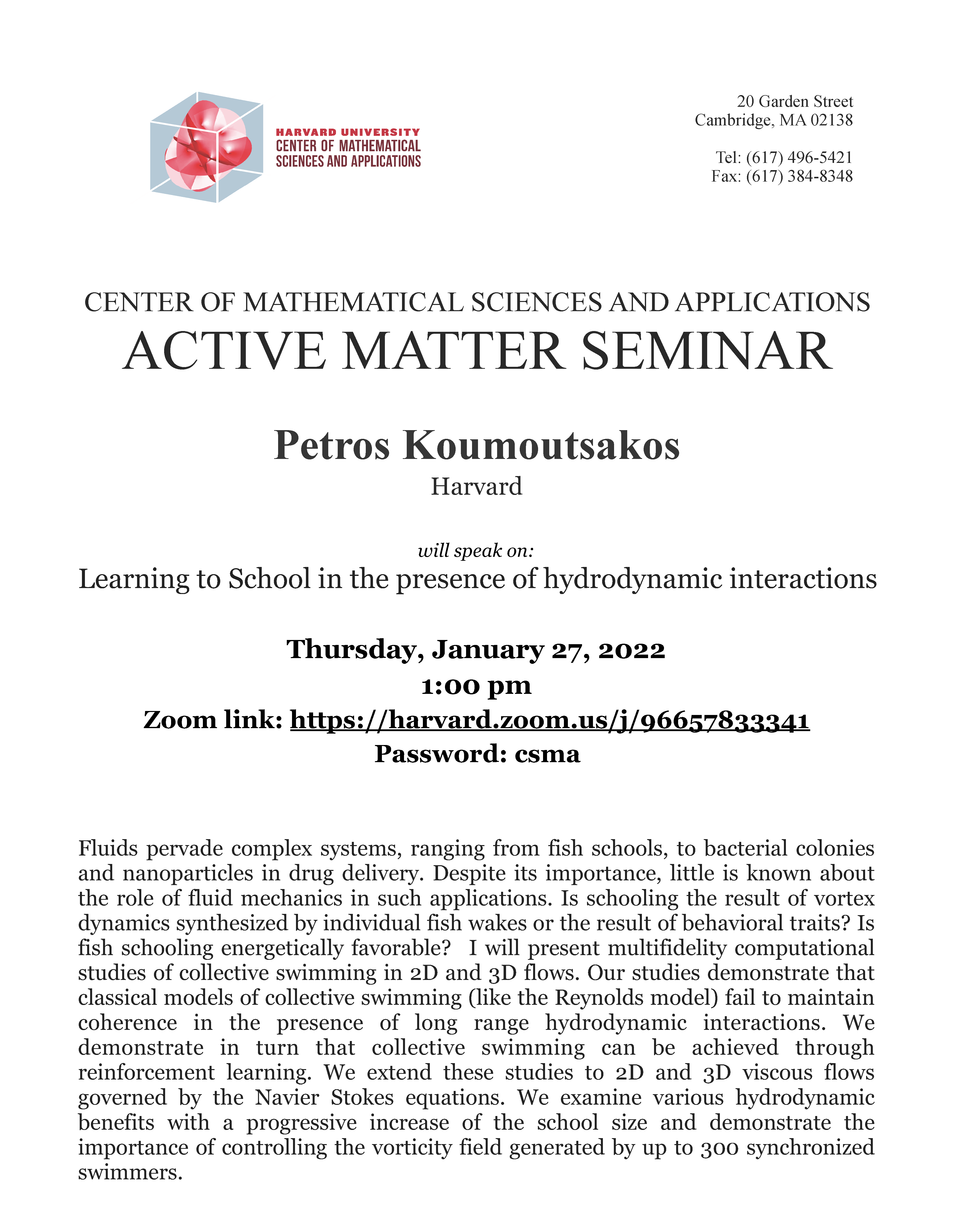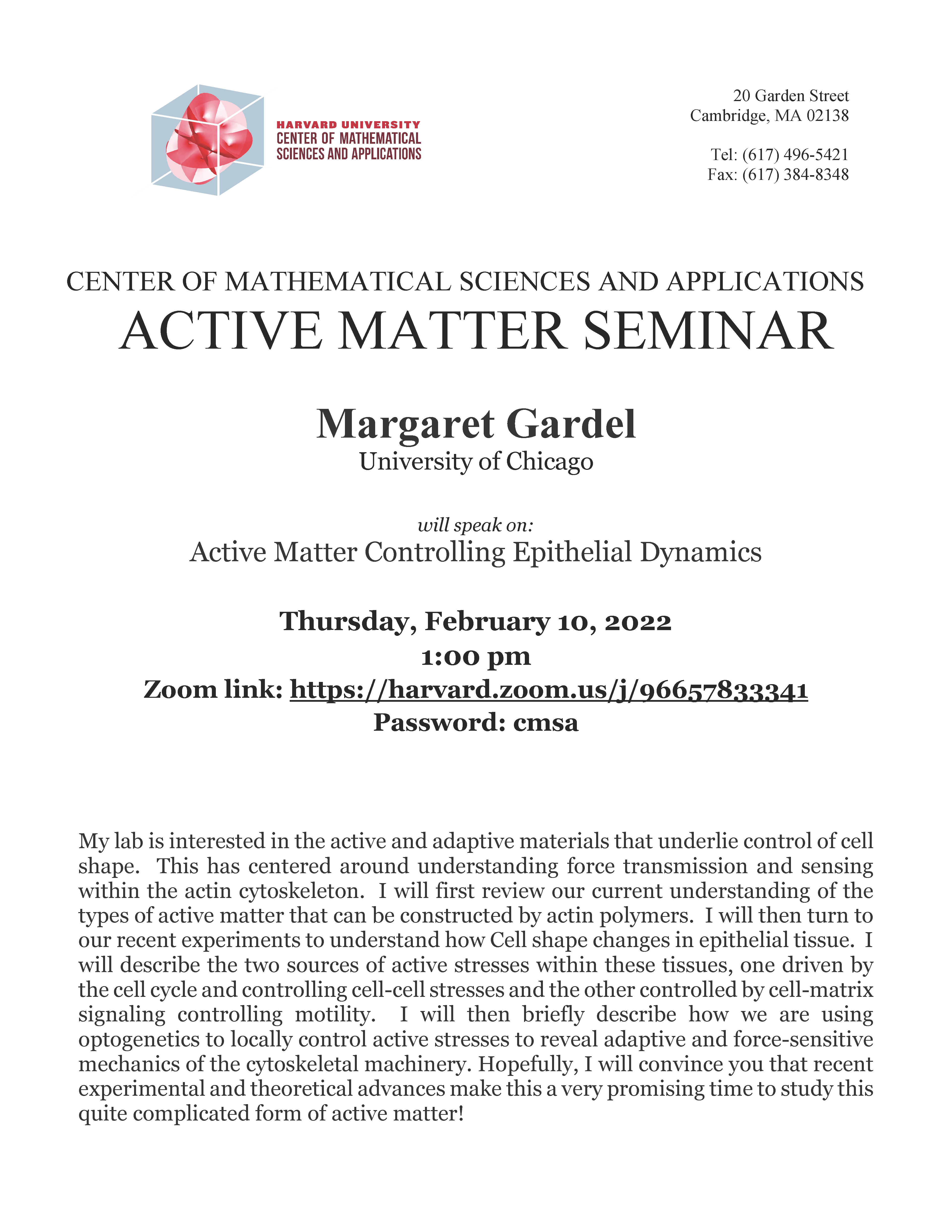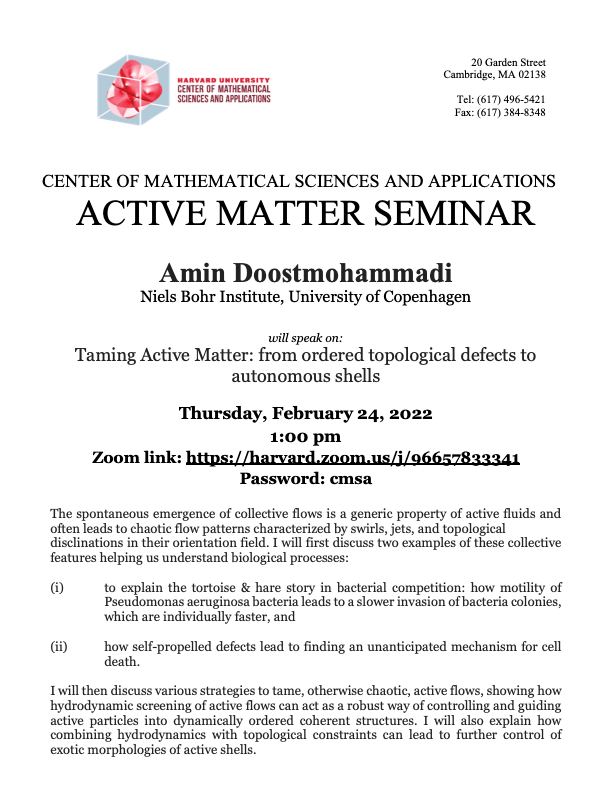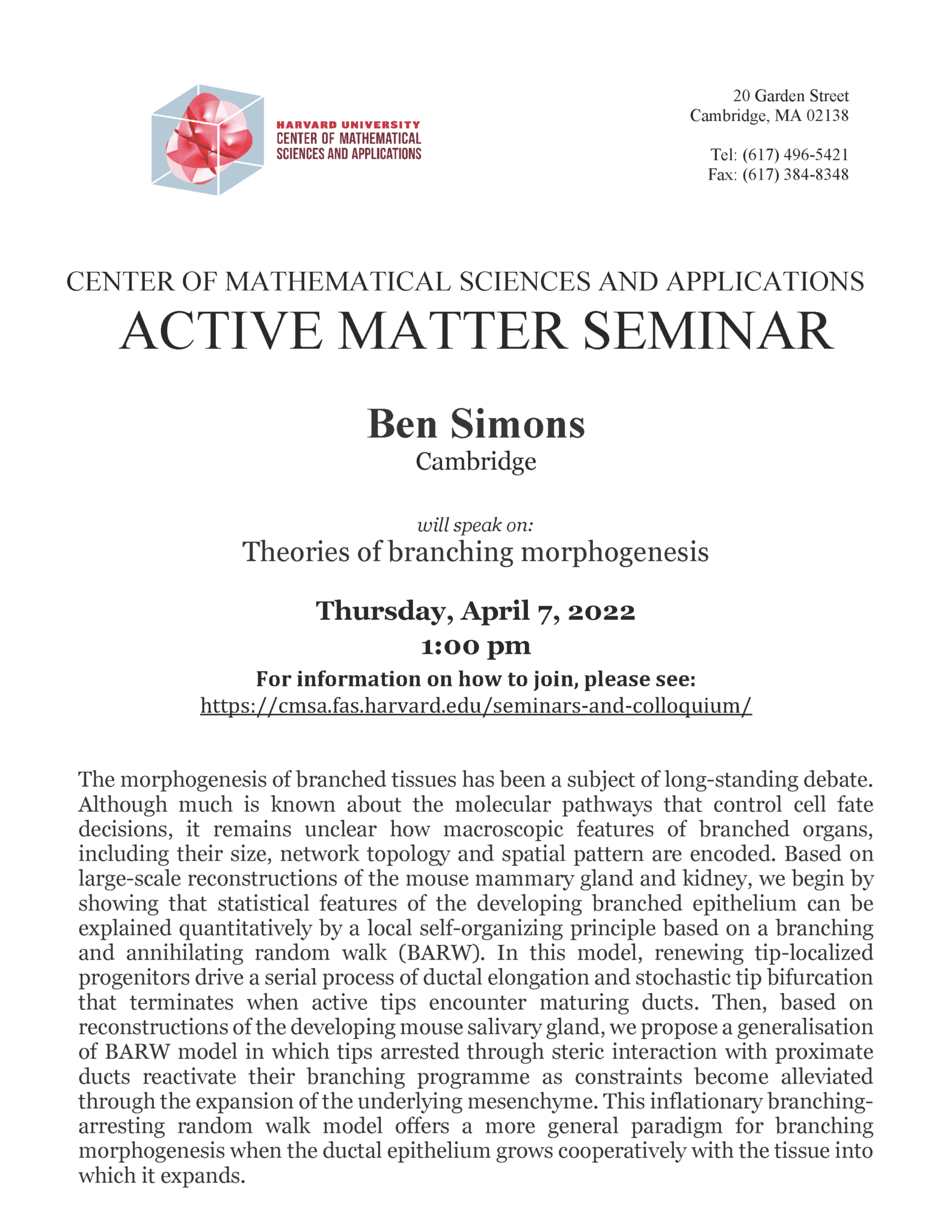The many phases of a cell
Abstract: I will begin by introducing an emerging paradigm of cellular organization – the dynamic compartmentalization of biochemical pathways and molecules by phase separation into distinct and multi-phase condensates. Motivated by this, I will discuss two largely orthogonal problems, united by the theme of phase separation in multi-component and chemically active fluid mixtures. 1. I will […]






